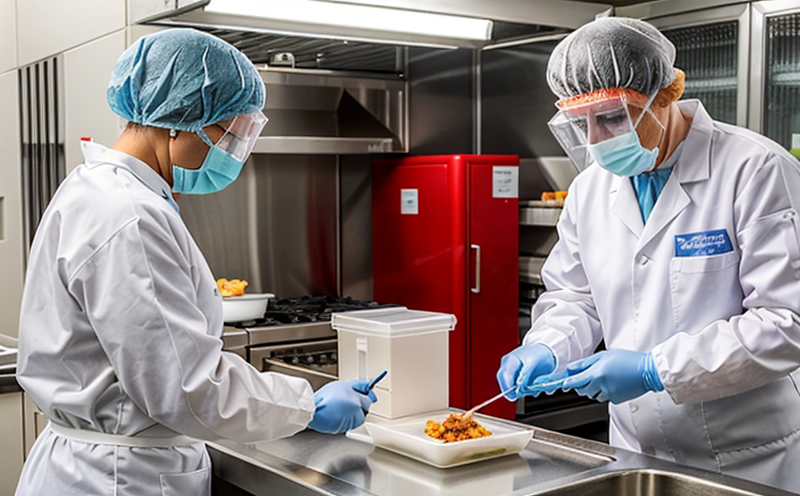EN ISO 15216-3 Validation of Alternative Methods for Foodborne Virus Detection
The CEN, the European Organization for Standardization, and its subsidiary technical committee TC/SC 34A have set forth a robust framework within EN ISO 15216-3. This standard provides guidelines for validating alternative methods used in foodborne virus detection. The importance of this validation lies in ensuring that these alternative methods meet the stringent quality requirements necessary to protect public health and ensure compliance with regulatory standards.
The primary goal of this service is to validate alternative methods using a rigorous process that ensures they are accurate, reproducible, and reliable for detecting foodborne viruses. This involves comparing the performance of the alternative method against an internationally accepted reference method as specified in EN ISO 15216-3. The validation process includes multiple stages such as method development, optimization, and verification. Each stage is designed to ensure that the new test method is equivalent or superior to the existing one.
The application of this standard is particularly critical for laboratories involved in food safety testing and quality control. It ensures that any changes made to current methods are scientifically sound and meet stringent criteria set by international standards bodies. This is crucial in maintaining public confidence in food safety measures while also supporting ongoing research into more efficient diagnostic tools.
The validation process itself involves several key steps including:
- Method development: Designing the alternative method with consideration of specific requirements outlined in EN ISO 15216-3.
- Optimization: Refining the method to ensure optimal performance, which includes determining appropriate sample preparation procedures and instrument settings.
- Verification: Confirming that the alternative method performs as expected through rigorous testing against a reference standard.
The entire process is designed to be comprehensive and meticulous, ensuring that all aspects of the alternative method are thoroughly tested. This approach not only enhances accuracy but also fosters trust among stakeholders by demonstrating adherence to recognized international standards.
By providing this service, we help our clients navigate the complexities involved in validating new methods for detecting foodborne viruses. Our expertise ensures that every step of the validation process adheres strictly to EN ISO 15216-3, thereby guaranteeing high-quality results and compliance with regulatory requirements.
Applied Standards
| Standard Name | Description |
|---|---|
| EN ISO 15216-3 | Validation of alternative methods for the detection of foodborne viruses. |
International Acceptance and Recognition
The validation process outlined in EN ISO 15216-3 is widely recognized and accepted across various countries. This international acceptance underscores the importance of adhering to this standard when validating alternative methods for foodborne virus detection. Laboratories that comply with these standards can be assured of their method's reliability and accuracy, which is crucial given the potential health risks associated with foodborne viruses.
Compliance with EN ISO 15216-3 also enhances a laboratory’s reputation within the industry. It demonstrates a commitment to excellence in terms of methodology and quality assurance, which can lead to greater trust from clients and partners. Moreover, compliance may be required by regulatory bodies or certification organizations as part of their approval process.
Given that this standard is internationally recognized, laboratories adhering to it are better positioned to participate in global collaborations and exchanges. This recognition also facilitates easier entry into international markets where adherence to such standards is often a prerequisite for doing business.
Use Cases and Application Examples
The validation of alternative methods as per EN ISO 15216-3 has numerous practical applications in the food industry. One common use case involves the development of faster, more sensitive diagnostic tools. For instance, a laboratory might aim to improve turnaround times for detecting noroviruses or hepatitis A virus (HAV) by optimizing an existing method or creating a novel approach.
A real-world example would be a research institution developing a new PCR-based assay that promises shorter processing times and higher sensitivity compared to traditional methods. By validating this alternative method according to EN ISO 15216-3, the institution can ensure its reliability before introducing it into routine operations or sharing results with regulatory bodies.
In another scenario, a food manufacturer might collaborate with an external lab to validate a modified extraction procedure for detecting rotaviruses in raw materials. This could involve optimizing sample preparation steps like homogenization and centrifugation to enhance the efficiency of subsequent testing stages.
The benefits extend beyond just technical improvements; they also include cost savings due to reduced reagents consumption and improved resource utilization. Additionally, validated methods contribute significantly towards meeting increased demand for rapid testing capabilities during outbreaks or recalls.





